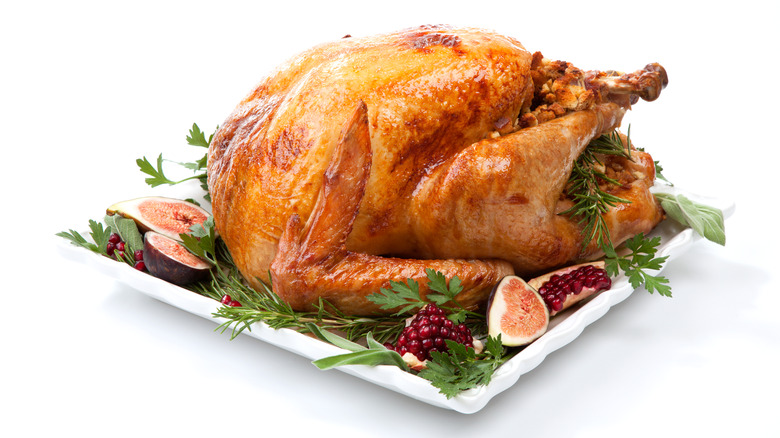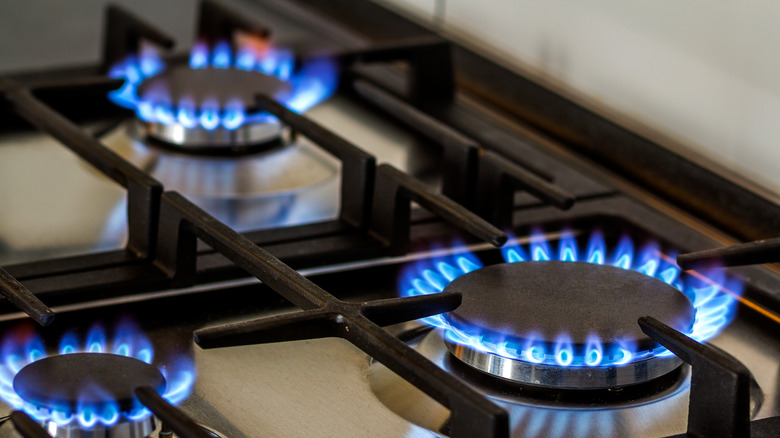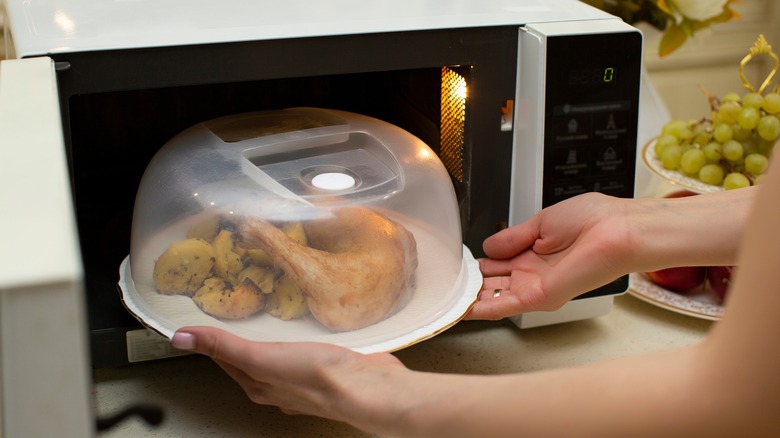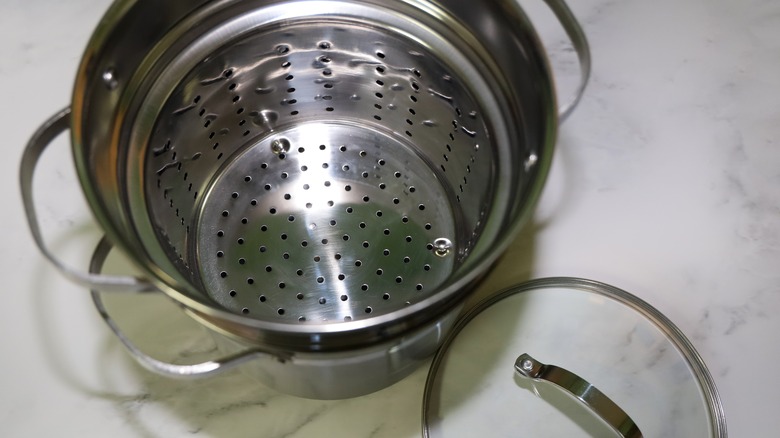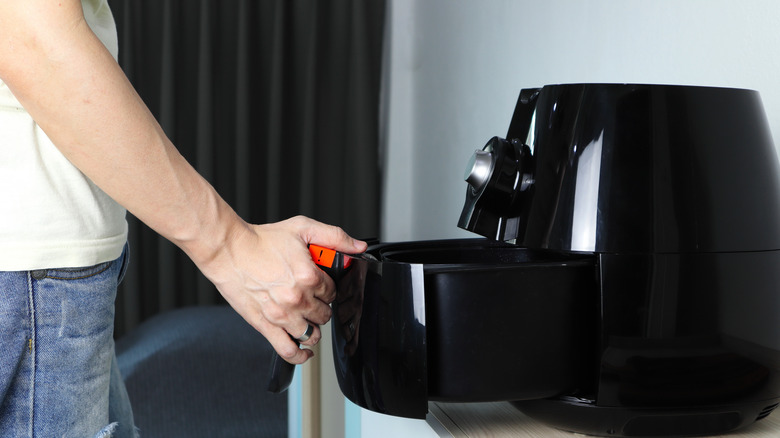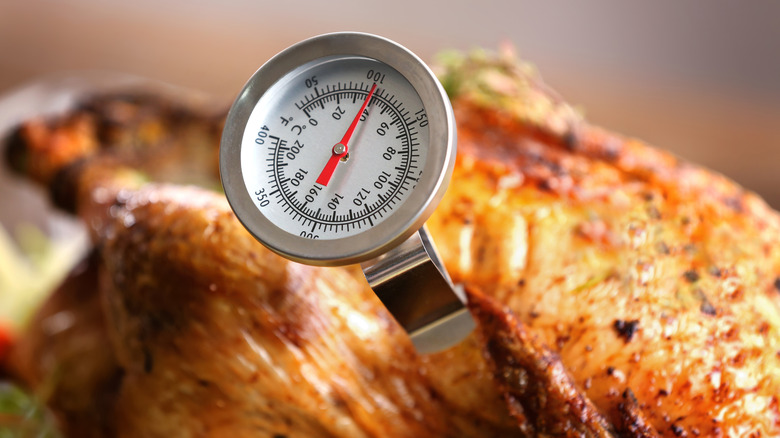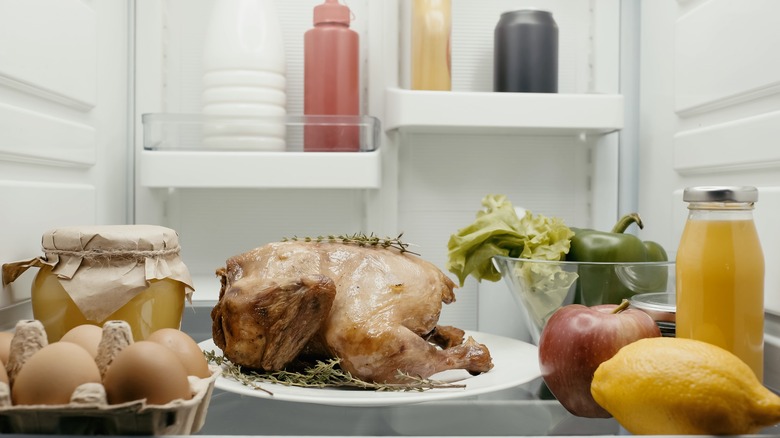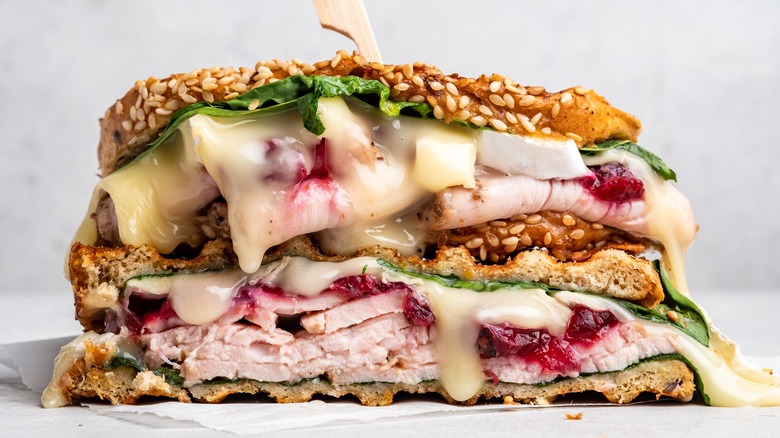How To Reheat Leftover Turkey
It's the day after Thanksgiving and you're still reveling in the hard work you put into making a delicious feast the day prior. When you take out the leftover mashed potatoes, stuffing, and gravy for a quick leftover lunch, you may second guess taking out the carved slices of turkey to reheat as well. While we all enjoy eating the leftovers from Thanksgiving, nobody enjoys figuring out how to best reheat the leftovers for that same-day flavor and moisture. And of all Thanksgiving leftovers, turkey might be the hardest to figure out.
Naturally, we've taken some of the guesswork out of reheating leftover turkey. This is a list of some of the best and worst (we're looking at you, microwave) ways to reheat Thanksgiving turkey for optimal flavor, moisture, and texture. You're likely to have at least one of the appliances needed for these reheating methods somewhere in your kitchen, especially if you were the house assigned to host Thanksgiving.
Reheating turkey in the oven
Reheating turkey in the oven is one of the most effective ways to reheat your poultry without it drying out. Place carved pieces of meat in an oven-safe baking dish with a splash of chicken or turkey stock, covered with foil, in the oven. The stock will steam the turkey and reheat the meat without drying it out too much. The foil is important to capture the steam. Although this is the best method for moist meat, you should expect your turkey to heat at a low temperature for roughly half an hour before it is ready to eat.
If you make your turkey and gravy ahead of time on Thanksgiving day, you can take advantage of Ina Garten's turkey hack. The renowned chef recommends slicing the turkey ahead of time and putting the slices in a gravy-filled, oven-safe dish. About 15 minutes before you're ready to serve your turkey, place the dish in the oven to warm up. The gravy keeps the turkey moist and flavorful — characteristics that will carry over to when your turkey is sitting on the table waiting for folks to snag a slice.
Reheating turkey on the stovetop
You should flock to your stovetop if you want a faster way to reheat your turkey while still locking in some moisture. Simmer the desired amount of turkey in a small pan with a splash of chicken broth to bring the slices up to an internal temperature of 165 degrees Fahrenheit, which is the safe cooking temperature for poultry products, per the United States Department of Agriculture. You do not necessarily need to cover the pan with a lid, but you do need to keep a close eye on the turkey to prevent the meat from burning.
Reheating meat on a stovetop does have its drawbacks. You are limited to how much meat you need to reheat by the size of the pan and you need to keep a watchful eye on the turkey at all times — no absent-minded football-watching while the meat is on the stove. If you want to walk away from reheating turkey or are preparing leftovers for a crowd, we recommend sticking to the oven.
Reheating turkey in the microwave
Reheating turkey in the microwave results in dry meat and should be avoided, if possible. You can mimic the same steamy environment as an oven by placing the turkey in a microwave-safe container with about half an inch of broth. Cover with the container lid or microwave-safe plastic wrap to lock in the moisture. It is important not to let the plastic wrap touch the turkey because it can cause potentially hazardous materials to leach into the food, per Microwave Meal Prep. You can further minimize the risk of ingesting plastics from the wrap by only cooking on low or medium heat and cooking for no more than two minutes. Or just use the container lid — it's much easier.
To avoid stripping all the moisture from the turkey, cook until the internal temperature is 165 degrees Fahrenheit. Once the turkey is heated to this temperature, remove it from the microwave and serve it with your other Thanksgiving leftover favorites.
Reheating turkey in a steamer basket
Steam is an important factor in crafting succulent leftover turkey. This somewhat unconventional way to reheat leftover turkey involves adding a cup of water to a pot and placing the leftover turkey into a steamer basket. Heat the stove to medium-high and allow the turkey to cook until it reaches an internal temperature of 165 degrees Fahrenheit. Then, remove the meat from the heat and serve.
The steamer basket method works best for large cuts of meat like drumsticks, thighs, and breast meat. It also takes considerably less time to reheat — about five to six minutes — compared to reheating in an oven. One downside to using a steamer method, though, is the number of dishes you'll have to do as cleanup (the pot, the lid for the pot, and the basket) — and after Thanksgiving, we doubt you'll jump at the potential to do even more dishwashing.
Reheating turkey in an air fryer
Of all the uses for your air fryer, you can now add reheating leftover turkey to the list. The air frying method works best for reheating skin-on turkey cuts like drumsticks or wings. The heat from the air fryer crisps up the skin, but you will have to take precautions to ensure the meat does not dry out with the heat of the air fryer. You should have a pair of tongs handy to rotate the meat every couple of minutes to ensure an even crispness on all sides.
If you want to reheat a drier turkey breast in your air fryer, you will need to take a few additional steps. Wrap the desired pieces of meat in tin foil with a splash of stock. This will create the same steam effect for the meat as other reheating methods. Seal the foil and add to the air fryer. The cooking time isn't concrete, but shoot for roughly eight to 10 minutes per pound of meat.
How often to reheat your leftover turkey
Any time you reheat food, you risk exposure to foodborne illnesses. The main foodborne illness culprit in turkey is clostridium perfringens — a bacteria that can cause gastrointestinal upset and more severe complications for those with compromised bodily systems. For this reason, the Centers for Disease Control and Prevention recommends only reheating your turkey once. This means that if you have a ton of leftovers, reheat small portions at a time to reduce food waste and keep your family safe during the holiday season. You should also divide leftovers into smaller portions in your refrigerator to speed up the cooling process of the meat.
As with other poultry, you should use an internal temperature reading of 165 degrees Fahrenheit to check if your leftovers are ready to eat. At this internal temperature, pathogens are less likely to move around and potentially contaminate your food.
How to store turkey
From a flavor perspective, you should cook a turkey with the intention of storing the leftovers. This means taking special care to allow the turkey to rest to soak up moisture, as well as wet or dry brining your meat for a juicier roast. Besides flavor, storing turkey properly is critical to maintaining food safety and reducing the risk of foodborne illness. According to the United States Department of Agriculture, you should baste some of the juices over the turkey after it's carved for moisture. After the meat is covered with a container, it needs to be chilled no more than two hours after carving. Cold, cooked turkey can last in the fridge for up to four days. Turkey that has an odd odor, looks like it has a layer of slime, or doesn't taste quite right is likely spoiled. At the four-day mark, your other Thanksgiving favorites like stuffing and mashed potatoes will likely start to show signs of spoilage too.
What to make with your leftover turkey
There are endless possibilities for using your turkey leftovers. The most conventional ways to use leftover slices of turkey include in sandwiches or wraps, but you can also integrate chopped turkey into your next warm turkey chili.
You can use multiple leftovers in one dish by making a turkey shepherd's pie. Combine the turkey, stuffing, and frozen peas together to start the base of the pie. Add leftover mashed potatoes to a pastry bag with a tip to pipe them on top of the shepherd's pie before baking until lightly brown. You can also combine shredded turkey and stuffing into a casing of mashed potatoes for a Thanksgiving leftover take on croquettes. After these balls are formed, the croquettes are deep-fried and served with a side of — you guessed it — cranberry sauce and warmed gravy. With recipes like these, you likely won't run the risk of getting close to that four-day timeline.
